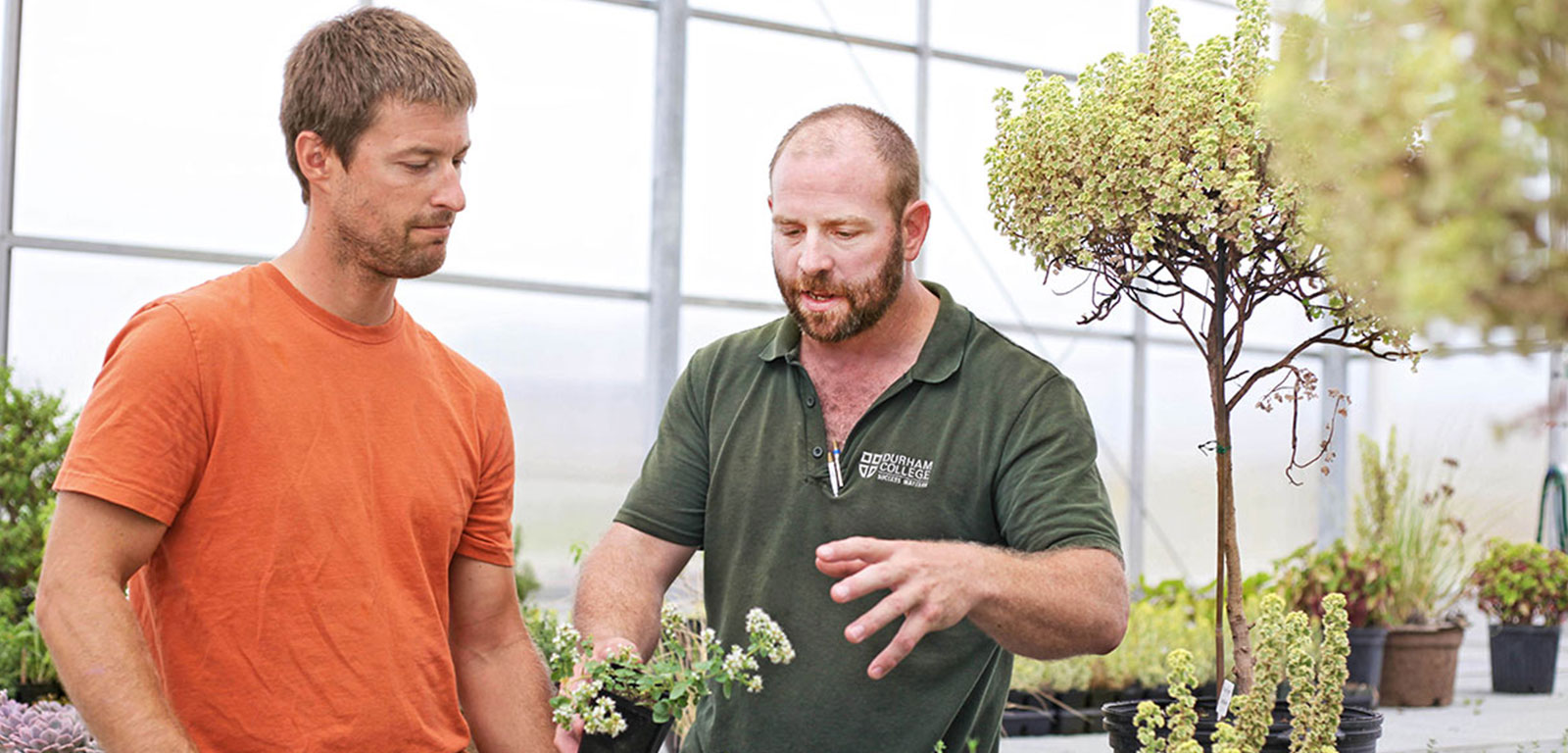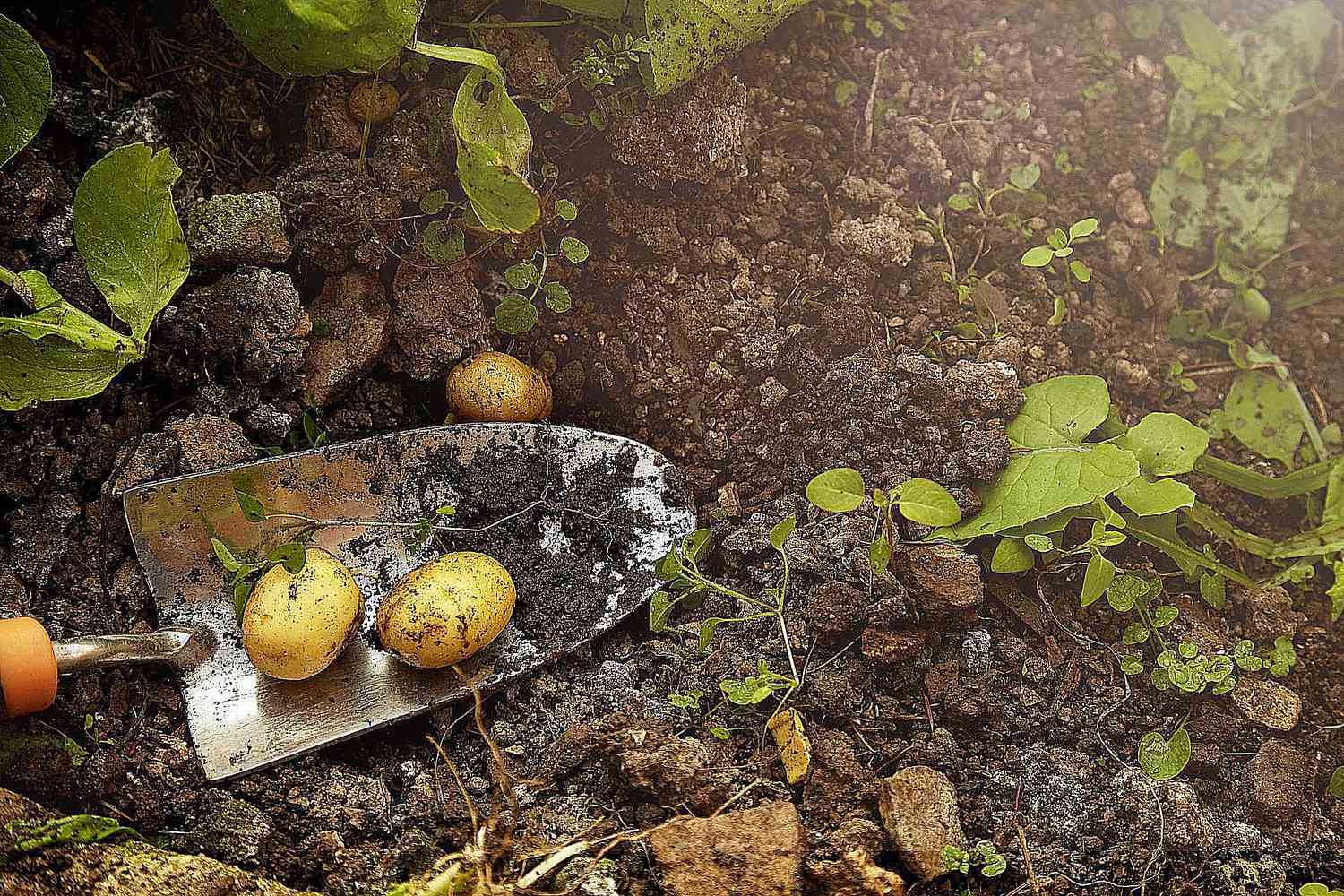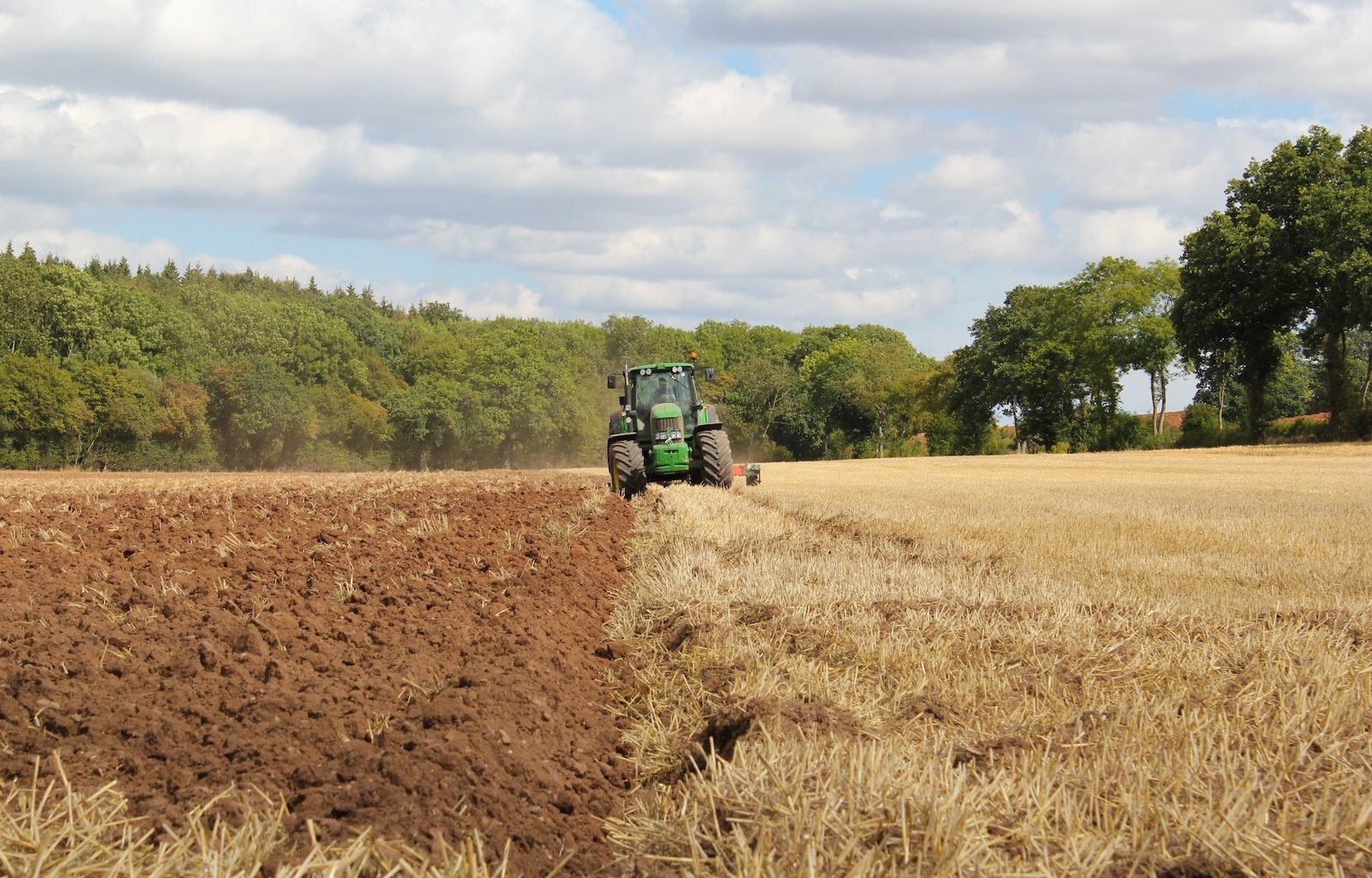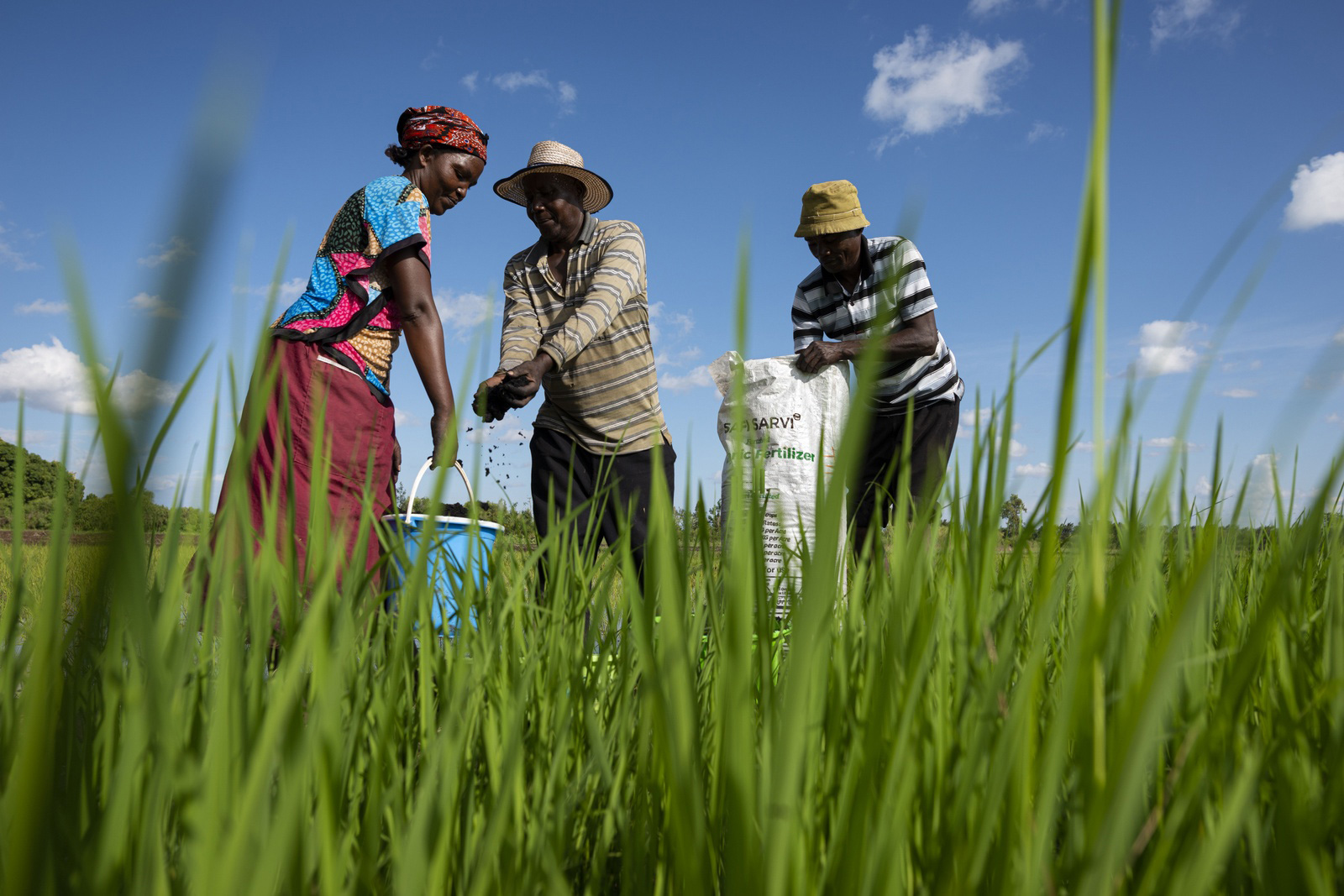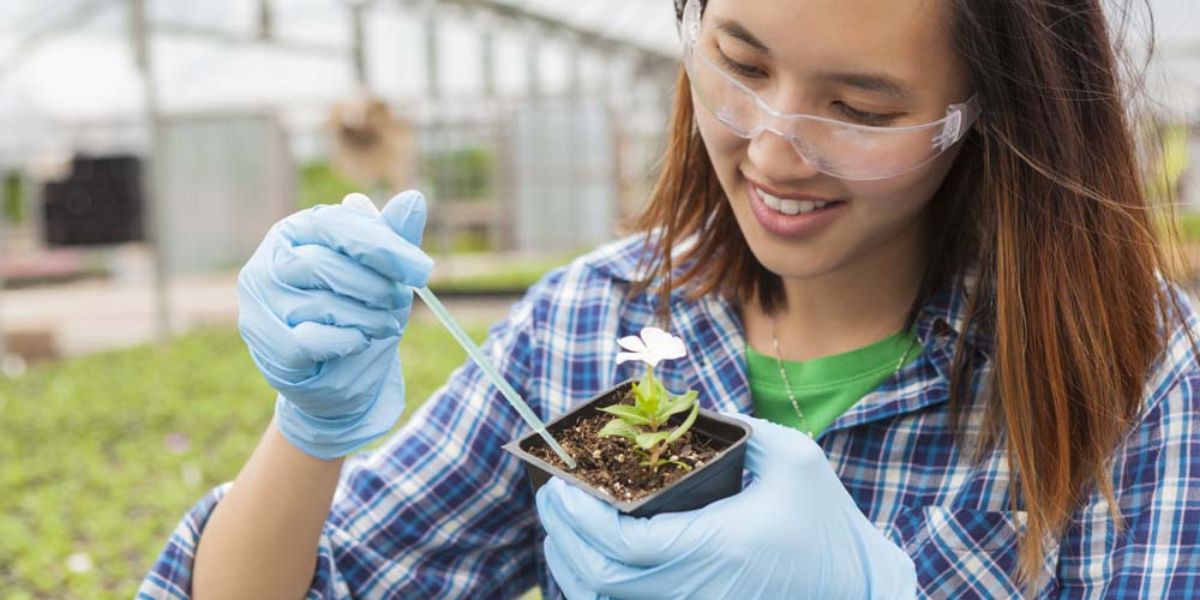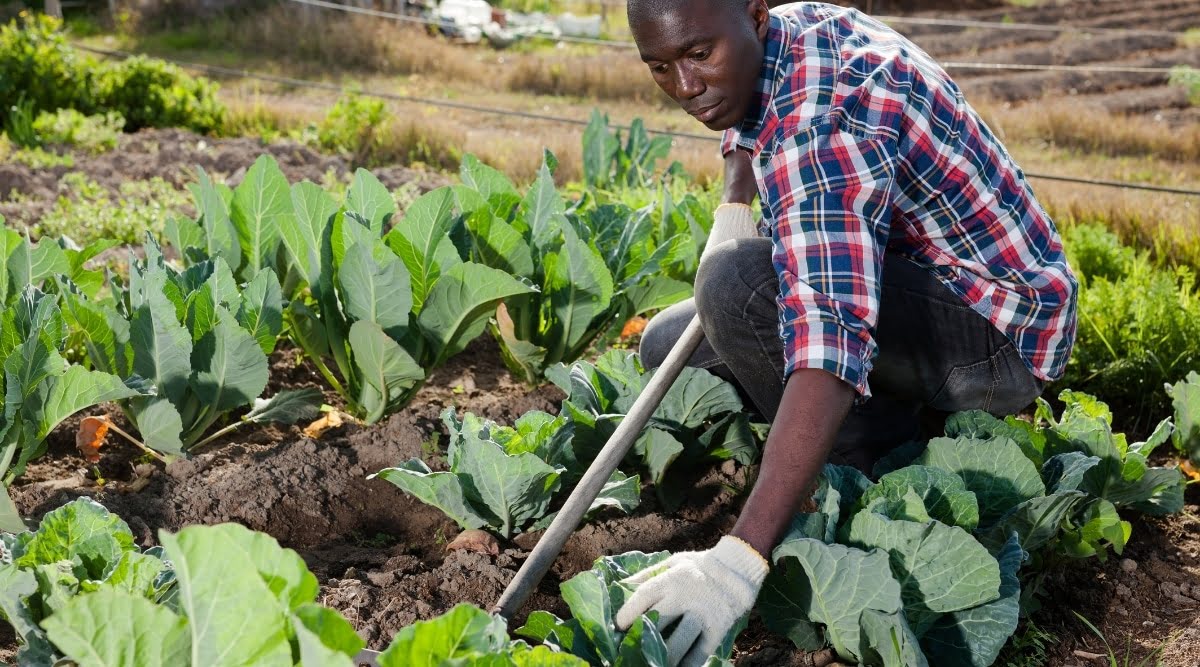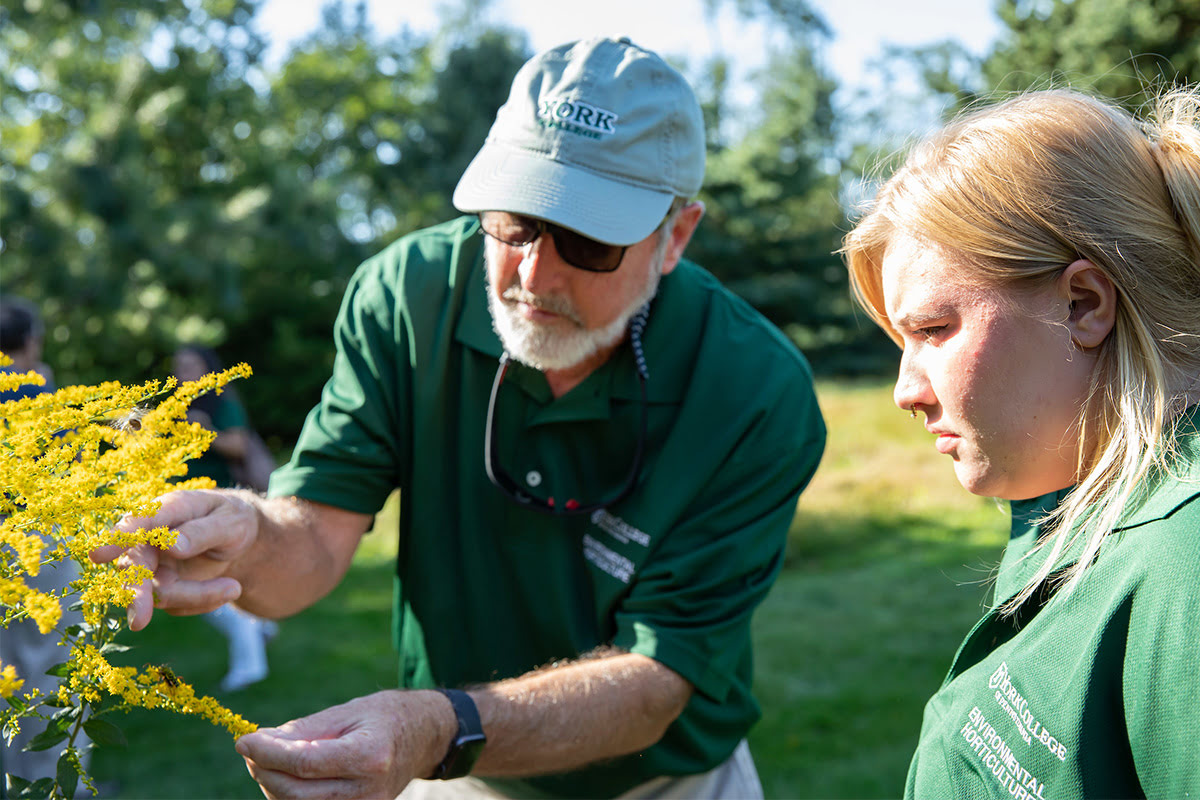Home>Gardening News and Trends>Latest News>What Is Horticulture Crops
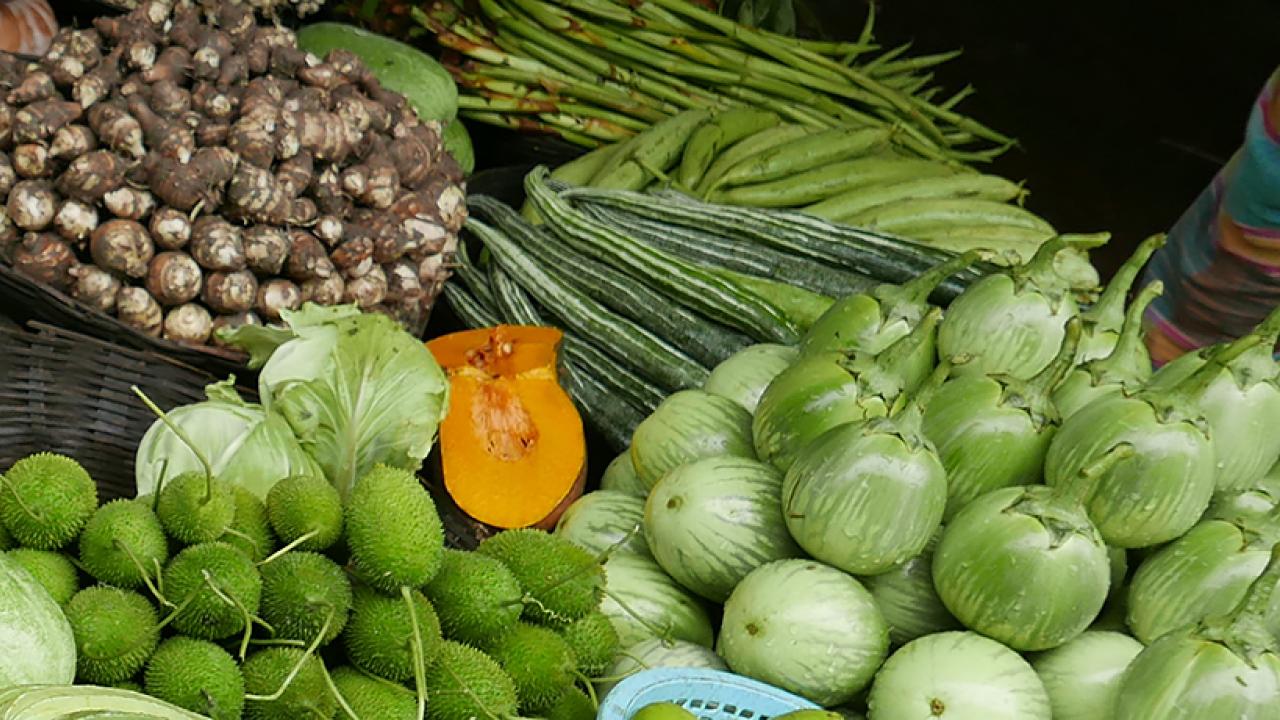

Latest News
What Is Horticulture Crops
Modified: February 8, 2024
Discover the latest news and updates on horticulture crops. Stay informed about the advancements, trends, and techniques in this field.
(Many of the links in this article redirect to a specific reviewed product. Your purchase of these products through affiliate links helps to generate commission for Chicagolandgardening.com, at no extra cost. Learn more)
Table of Contents
Introduction
Welcome to the world of horticulture crops, where nature’s beauty and productivity collide! Horticulture crops, also known as horticultural crops, refer to a wide range of plants that are cultivated and nurtured for their aesthetic, culinary, medicinal, and economic value. From vibrant flowers and flavorful fruits to aromatic herbs and healing plants, horticulture crops offer a diverse array of benefits for both human enjoyment and sustenance.
Horticulture crops have been an integral part of human civilization for centuries. From ancient gardens of Babylon to modern day greenhouses, these crops have played a vital role in providing sustenance, healing, and joy to people all over the world. With their unique ability to adapt to different climates and growing conditions, horticulture crops have become essential components of agriculture and horticulture industries globally.
The cultivation of horticulture crops requires a combination of art, science, and passion. It involves meticulous planning, proper soil and water management, pest and disease control, and careful harvesting techniques. Whether you are a professional farmer, a hobbyist gardener, or someone simply curious about the world of plants, understanding horticulture crops will open up a whole new world of possibilities.
Throughout history, horticulture crops have not only provided sustenance, but have also served as sources of inspiration and cultural significance. They have been celebrated in art, literature, and religious rituals, symbolizing beauty, fertility, and abundance. The aesthetic appeal of horticulture crops is undeniable, with their vibrant colors, delightful scents, and intricate forms capturing the imagination and lifting spirits.
In today’s world, where urbanization and technology often dominate, reconnecting with nature through horticulture crops can bring a sense of balance, harmony, and well-being. Whether it is the satisfaction of growing your own food, creating a stunning garden, or immersing yourself in the therapeutic benefits of nature, horticulture crops offer a gateway to a more sustainable and fulfilling lifestyle.
This article will explore the definition of horticulture crops, their importance, different types, cultivation techniques, common challenges, and the multitude of benefits they offer. Join us as we embark on a journey through the fascinating world of horticulture crops and discover the wonders they hold.
Definition of Horticulture Crops
Horticulture crops encompass a wide variety of plants that are cultivated for their aesthetic, culinary, medicinal, and economic value. These crops include fruits, vegetables, flowers, herbs, ornamental plants, and even certain trees. Unlike field crops, which are primarily grown for mass production and large-scale agricultural purposes, horticulture crops are typically cultivated in controlled environments and often require specialized care.
The term “horticulture” itself refers to the science and art of cultivating plants for human use and enjoyment. It involves techniques such as propagation, planting, pruning, irrigation, and harvesting to ensure optimal growth and productivity of plants. Horticulture crops can be grown in different settings, including gardens, greenhouses, nurseries, and even urban spaces such as rooftop gardens and vertical farms.
One of the distinguishing features of horticulture crops is their wide range of applications. Fruits and vegetables, such as apples, tomatoes, and lettuce, are grown for human consumption and provide essential nutrients for a healthy diet. Flowers, like roses, tulips, and lilies, are cultivated for their beauty and are often used in floral arrangements, landscaping, and ornamental purposes. Herbs, such as basil, mint, and lavender, are prized for their aromatic and medicinal properties.
In addition to their practical uses, horticulture crops also contribute to the economy. They provide livelihoods for farmers, gardeners, distributors, and retailers across the globe. The horticulture industry is a significant sector of the agricultural economy, generating billions of dollars in sales every year.
It is important to note that horticulture crops can be categorized into two main groups: edible crops and ornamental crops. Edible crops include fruits, vegetables, and culinary herbs that are consumed by humans or used in food production. Ornamental crops, on the other hand, are primarily grown for their visual appeal and are used in landscaping, flower arrangements, and decorative purposes.
Horticulture crops are cultivated with a focus on quality rather than quantity. They require specific care and attention to ensure optimal growth, productivity, and disease resistance. This often involves practices such as soil testing, pest management, and controlled irrigation to create the ideal growing conditions for each crop.
By understanding the definition of horticulture crops, we can appreciate the importance and versatility of these plants and the vital role they play in our daily lives. Whether it is the taste of a freshly picked apple, the fragrance of a blooming rose, or the visual delight of a well-maintained garden, horticulture crops enrich our senses and bring joy to our lives.
Importance of Horticulture Crops
Horticulture crops play a crucial role in our lives, providing numerous benefits and contributing to various aspects of society and the environment. From their nutritional value to their aesthetic appeal, here are some key reasons why horticulture crops are important:
- Food Security: Horticulture crops such as fruits, vegetables, and culinary herbs are essential for our dietary needs. They are rich in vitamins, minerals, and antioxidants, promoting good health and well-being. By cultivating a diverse range of horticulture crops, we can ensure a steady supply of nutritious food for communities and address the issue of food security.
- Economic Value: The horticulture industry plays a significant role in the global economy. Horticulture crops generate substantial revenue, providing livelihoods for farmers, gardeners, and various stakeholders in the supply chain. Additionally, horticultural activities, such as landscaping, garden design, and flower arrangement, contribute to the economy through tourism and recreational pursuits.
- Environmental Conservation: Horticulture crops have a positive impact on the environment. They improve air quality by absorbing carbon dioxide and releasing oxygen. Additionally, horticulture crops contribute to soil conservation by preventing erosion and promoting soil health through their root systems. They also support biodiversity by providing habitats for various beneficial insects and birds.
- Aesthetic Beauty: Horticulture crops enhance the visual appeal of our surroundings. Flowers, ornamental plants, and well-maintained gardens add beauty and bring joy to our lives. They create serene and peaceful environments, uplifting moods, and creating a sense of tranquility. Horticulture crops are often used in landscaping, beautifying public spaces, residential areas, and urban landscapes.
- Health and Well-being: Engaging with horticulture crops has numerous benefits for our mental and physical health. Gardening and spending time surrounded by nature have been proven to reduce stress levels, improve mood, and increase overall well-being. Furthermore, horticulture therapy is used as a form of rehabilitation and healing for individuals with physical or mental health conditions.
- Cultural Significance: Horticulture crops hold cultural and traditional importance in many societies. They are used in religious ceremonies, festivals, and rituals, symbolizing renewal, abundance, and fertility. Additionally, horticultural practices have been passed down through generations, serving as a way to connect with our heritage and preserve cultural traditions.
The importance of horticulture crops cannot be overstated. They provide us with sustenance, improve our environment, enhance our well-being, and connect us to nature and our cultural roots. By recognizing their significance, we can foster a greater appreciation for horticulture crops and work towards their sustainable cultivation and preservation.
Types of Horticulture Crops
The world of horticulture crops is incredibly diverse, encompassing a wide range of plants that serve different purposes. Here are some of the main types of horticulture crops:
- Fruits: Fruits are one of the most popular and widely consumed horticulture crops. They include apples, oranges, berries, melons, and many more. Fruits are not only delicious but also packed with essential vitamins, minerals, and fiber. They are consumed fresh, used in cooking and baking, and processed into juices, jams, and preserves.
- Vegetables: Vegetables play a crucial role in our diets, providing us with valuable nutrients. Examples of horticulture vegetable crops include tomatoes, lettuce, carrots, broccoli, and peppers. Vegetables are versatile ingredients used in a variety of culinary preparations, from salads and stir-fries to soups and stews.
- Herbs: Horticulture herbs are prized for their aromatic and medicinal properties. They include basil, mint, rosemary, parsley, and lavender, among others. Herbs are used in cooking to enhance flavors and add freshness to dishes. They are also utilized for their medicinal properties, whether in the form of teas, essential oils, or herbal remedies.
- Flowers: Flowers are not only beautiful but also serve various purposes in horticulture. They include roses, tulips, lilies, dahlias, and sunflowers, to name a few. Flowers are used for decorative purposes, in floral arrangements, and for landscaping. They also attract pollinators, such as bees and butterflies, and contribute to biodiversity in ecosystems.
- Ornamental Plants: Horticulture ornamental plants are grown primarily for their aesthetic appeal. They include trees, shrubs, and flowering plants that enhance the visual beauty of gardens, parks, and landscapes. Ornamental plants can provide shade, privacy, and create focal points in outdoor spaces. Examples include Japanese maples, hydrangeas, azaleas, and magnolias.
- Indoor Plants: Indoor plants, also known as houseplants, are cultivated for their ability to thrive indoors. They can purify the air, improve indoor humidity levels, and add a touch of greenery to indoor spaces. Popular indoor plants include pothos, peace lilies, snake plants, and spider plants.
- Trees: Trees are essential components of the horticulture world. They provide shade, help in temperature regulation, and contribute to the overall well-being of the environment. Horticulture trees include fruit trees, ornamental trees, and timber trees that offer economic and ecological benefits.
These are just a few examples of the wide variety of horticulture crops. Each type has its own specific cultivation requirements and uses. Whether it is enjoying the sweetness of a fresh fruit, the aroma of an herb, or the beauty of a flower, horticulture crops provide us with an abundance of delights to enrich our lives.
Cultivation Techniques for Horticulture Crops
Successful cultivation of horticulture crops requires the application of specific techniques and practices to ensure optimal growth, productivity, and overall plant health. Here are some common cultivation techniques employed in horticulture:
- Propagation: Propagation involves creating new plants from existing ones. Common propagation methods for horticulture crops include seed sowing, vegetative propagation (such as stem cuttings, layering, and grafting), and tissue culture. The choice of propagation method depends on the type of crop and desired outcome.
- Site Selection: Choosing the right site is crucial for horticulture crop cultivation. Factors such as sunlight exposure, soil type, drainage, and proximity to water sources must be taken into consideration. Some crops thrive in full sun, while others prefer partial shade. Adequate soil preparation, including soil testing, amendment, and pH adjustment, ensures optimal growing conditions.
- Soil Management: Proper soil management is vital for horticulture crop success. This includes maintaining soil fertility through the use of organic matter, compost, and fertilizers. Regular soil testing helps determine nutrient deficiencies and allows for targeted fertilization. Irrigation practices, such as drip irrigation or sprinkler systems, ensure consistent moisture levels.
- Planting: Planting techniques vary depending on the crop. Seeds are sown at the appropriate depth and spacing, while seedlings or transplants are carefully placed in prepared soil. Providing proper support structures, such as trellises for climbing plants or stakes for tall crops, ensures stability and prevents damage.
- Pruning and Training: Pruning and training techniques are crucial for shaping plants, promoting air circulation, and optimizing yield. Pruning involves removing dead or diseased branches, while training ensures proper growth direction. Techniques such as pinching, tip pruning, and espalier can be applied to control plant form and promote branching.
- Pest and Disease Management: Protecting horticulture crops from pests and diseases is essential to ensure healthy growth. Integrated Pest Management (IPM) strategies, which combine cultural practices, biological controls, and judicious use of pesticides, minimize damage and reduce environmental impact.
- Harvesting: Each horticulture crop has specific indicators and methods for determining its readiness for harvest. Proper timing ensures optimal flavor, texture, and nutritional content. Harvesting techniques vary, from carefully hand-picking delicate fruits or petals to using machinery for larger-scale operations.
It is important for horticulture farmers and gardeners to stay informed about the latest cultivation techniques and best practices. This helps ensure sustainable and efficient production, minimizing the use of resources and maximizing crop quality and yield. By utilizing these techniques, horticulture enthusiasts can cultivate a thriving and diverse array of plants, contributing to the beauty and abundance of our natural world.
Common Challenges in Horticulture Crop Production
While cultivating horticulture crops can be rewarding, it is not without its challenges. Growers often face various obstacles that can impact crop health, yield, and profitability. Here are some common challenges in horticulture crop production:
- Pest and Disease Pressure: Pests and diseases pose a significant threat to horticulture crops. Insects, mites, fungi, bacteria, and viruses can cause damage, leading to reduced yield and quality. Implementing integrated pest management (IPM) strategies, such as regular scouting, using biological controls, and applying appropriate pest management techniques, is crucial for minimizing the impact of pests and diseases.
- Weather Extremes: Horticulture crops are highly susceptible to weather fluctuations. Extreme temperatures, frost, heatwaves, drought, or excessive rainfall can stress the plants and affect their growth and development. Employing protective measures, such as using row covers, shade structures, or irrigation systems, can help mitigate the impact of adverse weather events.
- Soil Quality and Fertility: Maintaining optimal soil health is essential for successful horticulture crop production. Soil erosion, nutrient deficiencies, pH imbalance, and compaction can hinder plant growth. Regular soil testing and appropriate soil management practices, such as adding organic matter, applying fertilizers, and implementing crop rotation, help improve soil fertility and structure.
- Weed Control: Weeds compete with horticulture crops for nutrients, water, and sunlight, resulting in reduced crop productivity. Implementing weed control strategies, including mulching, hand weeding, cultivation, and the use of herbicides, helps suppress weed growth and minimize their negative impact on crop yield.
- Water Management: Proper water management is crucial for horticulture crop production. Balancing water requirements, avoiding over- or under-irrigation, and ensuring efficient water use are key challenges. Employing irrigation systems, such as drip irrigation or sprinklers, and monitoring soil moisture levels helps optimize water usage and minimize water stress on plants.
- Market Volatility: Horticulture farmers often face market challenges due to fluctuating prices, changing consumer preferences, and competition. Market volatility can impact profitability and farm viability. Diversifying crops, establishing direct marketing channels, and staying informed about market trends can help mitigate the challenges associated with market volatility.
Addressing these challenges requires knowledge, experience, and adaptability. Horticulture farmers must stay updated on advancements in crop management practices, access resources and support networks, and remain resilient in the face of unpredictable circumstances. Overcoming these challenges leads to the production of healthy, high-quality horticulture crops that contribute to sustainable farming practices and the satisfaction of meeting consumer demands.
Benefits of Horticulture Crops
Horticulture crops offer a multitude of benefits that enrich our lives in various ways. From providing nutritious food to improving the environment and enhancing our well-being, here are some key benefits of horticulture crops:
- Nutritional Value: Horticulture crops, such as fruits and vegetables, are packed with essential vitamins, minerals, and fiber that are vital for a healthy diet. Consuming a diverse range of horticulture crops helps ensure optimal nutrition and supports overall well-being.
- Environmental Conservation: Horticulture crops contribute to environmental preservation. They improve air quality by absorbing carbon dioxide and releasing oxygen during photosynthesis. Additionally, horticulture crops help prevent soil erosion, promote biodiversity by attracting pollinators, and conserve water through efficient irrigation practices.
- Enhanced Aesthetics: Horticulture crops beautify our surroundings. Flowers and ornamental plants add visual appeal to gardens, parks, and public spaces, creating a pleasant ambiance and uplifting moods. Indoor plants bring a touch of nature into our homes and workspaces, enhancing the indoor environment and promoting well-being.
- Improved Mental and Physical Health: Engaging with horticulture crops has positive effects on our mental and physical well-being. Gardening and spending time in nature reduce stress levels, improve mood, and provide a sense of purpose and accomplishment. Horticulture therapy is used as a therapeutic technique to improve physical, emotional, and cognitive functioning.
- Cultural and Traditional Importance: Horticulture crops hold cultural and traditional significance in many societies. They are used in religious ceremonies, festivals, and rituals, symbolizing renewal, celebration, and abundance. Horticultural practices are passed down through generations, preserving cultural heritage and fostering a connection to our roots.
- Economic Value: Horticulture crops contribute to the economy through the creation of jobs and revenue generation. They provide livelihoods for farmers, gardeners, distributors, and retailers across the globe. The horticulture industry also encompasses sectors such as landscape design, floral arrangements, and tourism, further bolstering economic growth.
- Social Bonding and Community Building: Horticulture activities, such as community gardens, allotments, and farmers’ markets, promote social interaction, collaboration, and a sense of community. They provide opportunities for people to come together, share knowledge and skills, and foster connections with nature and with one another.
The benefits of horticulture crops extend beyond individual well-being to encompass the preservation of the environment, economic growth, cultural appreciation, and social cohesion. Embracing horticulture crops as an integral part of our lives not only enhances our own quality of life but also contributes to the greater good of society and the planet we call home.
Conclusion
Exploring the world of horticulture crops reveals the remarkable beauty, versatility, and benefits that these plants offer. From the vibrant hues of flowers to the nourishing qualities of fruits and vegetables, horticulture crops bring joy, sustenance, and a connection to nature into our lives.
The cultivation of horticulture crops involves a combination of art, science, and dedication. Farmers, gardeners, and enthusiasts employ various techniques to ensure optimal growth, manage challenges, and maximize yield. Propagation, site selection, proper soil management, and pest control are just a few of the approaches utilized to cultivate healthy and productive crops.
Horticulture crops play a vital role in our society and environment. They contribute to food security by providing nutritious sustenance while positively impacting the economy through job creation and revenue generation. Horticulture crops also enhance the aesthetic beauty of our surroundings and foster a sense of well-being for individuals through their therapeutic effects.
However, the cultivation of horticulture crops is not without its challenges. Pest and disease pressure, weather extremes, soil management, weed control, water management, and market volatility are just a few of the obstacles that growers face. By embracing sustainable practices, staying informed, and fostering resilience, horticulture farmers and gardeners can overcome these challenges and cultivate thriving crops.
As we appreciate the myriad benefits of horticulture crops, it is essential to recognize their cultural significance and traditional importance. These crops have been woven into our history, symbolizing abundance, celebrating traditions, and connecting us to our roots. Horticulture crops serve as a reminder of our deep relationship with nature and the harmony we can create when working alongside it.
In conclusion, horticulture crops bring immense value and beauty to our lives. From the nourishment they provide to the environmental benefits they offer, horticulture crops enhance our well-being, connect us to our cultural heritage, and contribute to a sustainable future. Embracing and supporting the cultivation of horticulture crops not only enriches our own lives but also holds the potential to create a more vibrant and balanced world for future generations.
